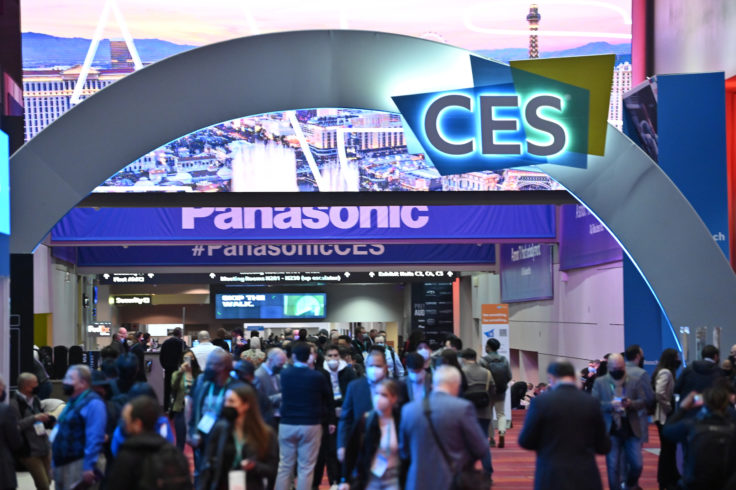
As an entrepreneur gearing up for production, you probably have a market entry date in mind. However, in order to hit that date, you need to assess your production readiness and pay attention to all the details big and small that surround the entire production process.
There are a lot of details to take into account, so to help you out, we worked with Riverwood Solutions to create a guide to help you determine where you are in your production timeline. From bill of material (BOM) reviews to product packaging and everything in between, these are the aspects you need to consider and the guidelines to determine your level of production readiness.
Manufacturability Review
Manufacturability is in essence the extent to which a product can be easily manufactured. If your product requires specialized machinery or training for manufacture, then it has low manufacturability.
Not Production Ready: Your product is extremely difficult and/or costly to manufacture because of a non-standard design for the product genre or because of complex assembly. Manufacturing will require specialized equipment, processes, or training, and it will likely result in a low first-pass yield.
Nearly Production Ready: Manufacturability is typical for this type of product. It will require process development but is generally within the realm of most contract manufacturers.
Production Ready: You can drop your product into almost any existing manufacturing line with very little unique equipment, processes, or training.
BOM Review
Having a complete and well formatted electronic (EE) BOM and mechanical (ME) BOM is an important part of making your operation production ready, because it supplies manufacturing with the exact information they need to get competitive pricing, navigate longer lead times, verify quality before production fully ramps, and avoid having to make changes that will lead to extra revision cycles and set back the manufacturing process later on. If you are struggling with your EE BOM, we at Arrow can offer our extensive expertise to help you put it together. In addition, Riverwood Solutions has valuable resources to help you put together your ME BOM.
Not Production Ready: Your EE BOM or ME BOM are obviously missing electrical or mechanical parts, and the final product cannot be assembled.
Nearly Production Ready: Your EE BOM and ME BOM are mostly complete. There are possibly a few minor electrical or mechanical parts that you haven’t called out specifically, and the BOMs could benefit from reformatting to increase clarity.
Production Ready: Both your EE BOM and ME BOM are fully complete and include specifications and drawings with part numbers, packaging, and documentation.
Determining Manufacturing Cost Estimate
In order to have a financially sustainable production process and run a profitable operation, you need to make sure your production cost aligns with the manufacturer’s suggested retail price (MSRP) for your end product. If you determine your product cannot cover production costs once it gets to market, then you are not ready for production.
Not Production Ready: The landed cost estimate exceeds the target MSRP.
Nearly Production Ready: The landed cost estimate is between 65% and 55% of the target MSRP.
Production Ready: The landed cost estimate is less than 50% of the target MSRP.
Assessing Documentation Package
Documentation includes all the written materials related to your product and production process. These materials often refer to BOMs, product or manufacture requirements, and customer facing information, and having them available ensures a streamlined operation.
Not Production Ready: The majority of documentation is not available and/or it is inadequate.
Nearly Production Ready: You have enough documentation to convey intent and high-level product requirements. Some information may be missing or insufficient.
Production Ready: You have a full document package available, including EE and ME BOMs, SW, CMF, and labeling, among other relevant documentation specific to your product.
Assessing Quality Plan
Your quality plan should address any specific product requirements as well as general high-level requirements. Essentially, your quality plan helps you ensure your product is a working product with a reliable performance.
Not Production Ready: You have no quality plan or it is not comprehensive enough to truly ensure product quality.
Nearly Production Ready: Your quality plan addresses the majority of high-level requirements but lacks in details around specific requirements to ensure product quality.
Production Ready: You have a well-documented plan to ensure product quality. The plan calls out cosmetic requirements, yield targets, MRB flow, EFA, and on-going reliability.
Assessing Test Plan
Your test plan ensures that your product is functional, reliable, and safe. This involves meeting electrical and mechanical engineering requirements for parts and components and establishing any on-going testing your product should undergo to ensure continued quality and performance.
Not Production Ready: You do not have a test plan or it is not capable of ensuring thorough product testing, especially with regards to product safety.
Nearly Production Ready: Your test plan covers the majority of high-level performance requirements, but lacks in certain details, and/or it is missing some tests for secondary requirements.
Production Ready: You have a well-documented plan to ensure product quality. Your testing plan for EE/ME/SW requirements is thorough, and you have specified on-going testing requirements.
Packaging Review
It isn’t uncommon for many operations to tack packaging on as an afterthought to the overall production process, but not having convenient, market-ready packaging can have negative consequences for your product timeline. Packaging should adequately protect its contents, and it should be easy to integrate product packaging into the production cycle.
Not Production Ready: Your product packaging is complex and perhaps ineffective at protecting the product. It could also be cost inefficient.
Nearly Production Ready: Product packaging has no special requirements, and sources are generally available.
Production Ready: Your product has off-the-shelf packaging.
Market Expectation VS. Estimate of Time to Readiness
Your market expectation is when you want your product to hit the market, while the estimate of time to readiness is the point at which your product is actually ready to go to market. Ideally, you want your product to be ready a good amount of time before you intend to go to market, and you should align your production with this intent in mind.
Not Production Ready: Your market readiness target date falls more than three months BEFORE the estimated manufacturing readiness date.
Nearly Production Ready: Your market readiness target date is more than one month BEFORE the estimated manufacturing readiness date.
Production Ready: Your market readiness target falls more than three months AFTER the estimated manufacturing readiness date.
Estimate of Time to Manufacturing Readiness
The amount of time it takes to be ready for manufacturing depends on the complexity of your product. Having a longer estimate of time isn’t necessarily a bad thing – it just means you have a lot more work to do before getting to market.
9-12 months: Your product is very simple; it requires only simple custom tooling and has to meet minimal qualifications. You more than likely do not need electronics to produce it.
12-18 months: Your product uses fairly typical electronics, none of which are leading edge or overly complex.
16-24 months: Your product is very complex and likely relies on new technologies and/or highly complex systems. SW/FW issues are anticipated.
These are the areas of production you need to address when determining whether you are ready for production or not, and making sure you have everything on the list checked off and fully completed is crucial for hitting your market entry date.
Determining if you have everything in place is a lot of work, but remember, you can always utilize Arrow tools and resources to accelerate your design cycle. And if you need design support to work out the fine details of building out a top-of-the-line product, you should consider getting Arrow Certified to take advantage of professional Arrow engineering expertise – we can streamline your entire production process, give you valuable design advice and part recommendations, and help you get your product to market sooner.


